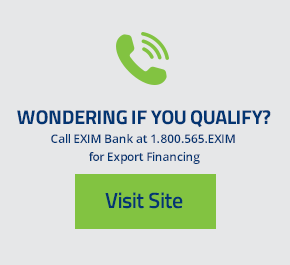The Problem: Tariff & Non-Tariff Barriers
Savvy small businesses are increasingly looking to foreign markets for growth opportunities but they face many tariff and non-tariff barriers—basically a tax on U.S. doing business in that country. Sometimes these tariffs can close-out US competition completely. Tariffs on U.S. manufactured goods can go as high as 100 percent and up to 700 percent for American agricultural products. Additionally, non-tariff barriers such as inaccessible or overly complex import licensing paperwork, unequal rules for customs valuations, pre-shipment requirements and rules-of-origin qualifiers, as well as differing product standards dissuade market entry.
Many small businesses report that these non-tariff barriers, including weak logistics services and slow delivery for small shipments, raise costs disproportionately to those of a larger exporter. New to export firms face even greater costs spending as much as much as 8 percent of their operating budget just preparing to export.
These and other nontariff trade barriers severely limit the ability of small businesses to venture into Asia-Pacific markets. However, U.S. small businesses cannot afford to be left out of Asia Pacific markets which will represent an estimated 3.2 billion middle-class consumers by 2020.
The Solution: Bringing Down the Walls
The Trans-Pacific Partnership (TPP) promises unprecedented access to these markets by eliminating nearly 18,000 tariffs across all industries. For example, exporting Iowa made tractors to the region will now be 30 percent cheaper, Colorado beef producers no longer have to price their beef 50 percent higher than the competition, Kentucky bourbon distillers will not face a 45 percent import tariff and California wine-makers will see a reduction of 55 percent to zero on their import tariffs. Find out how your business will benefit from these tax cuts by state and industry sector here.
TPP Markets and Benefits to U.S. Small Businesses
The TPP is a regional trade agreement that the U.S. is negotiating with 11 countries throughout the Asia-Pacific region. Member countries include Australia, Brunei Darussalam, Canada, Chile, Japan, Malaysia, Mexico, New Zealand, Peru, Singapore and Vietnam. China is not a party to the agreement. The Office of the United States Trade Representative highlights three major economic benefits of the TPP as 1) Eliminating tariffs, 2) Streamlining Customs Procedures, and 3) Strengthening Protections of Intellectual Property Rights (IPR).
Here is how your U.S. firm will benefit from exporting to the Asia Pacific region under the TPP.
- Eliminates over 18,000 tariffs on Made-in-America exports.
- Streamlines cumbersome customs procedures.
- Strengthens protections of Intellectual Property Rights (IPR).
- Provides specific title provisions for small and medium-sized businesses that include the creation of websites with market intelligence, increasing efficiency and transparency and reducing the cost of doing business.
- Provides for internet-based commerce, a competitive strength of the U.S. and an enabling factor for small businesses to find customers and sell their products.
- Requires that State Owned Enterprises (SOE) competing with U.S. business do so on a commercial basis.
- Applies the strongest standards for transparency and anti-corruption of any trade agreement in history.
Passing up on sales that you would normally pursue due to high tariff and non-tariff barriers need no longer be an option. TPP seeks to address these barriers and improve transparency and regulations for small businesses looking to venture into the Asia-Pacific region.
Finally, by expanding trade in the Asia-Pacific, TPP will create opportunities for small businesses by integrating them into the global supply chain, even if they do not benefit from exporting directly.
Without the scale and resources available to larger companies, small business competitors can count on a variety of government technical assistance programs, export guidance and trade finance options when crafting a successful market access strategy.
To find out how the Export-Import Bank of the United States (EXIM Bank) can facilitate your export of goods or services, contact an EXIM Bank Export Specialist.
